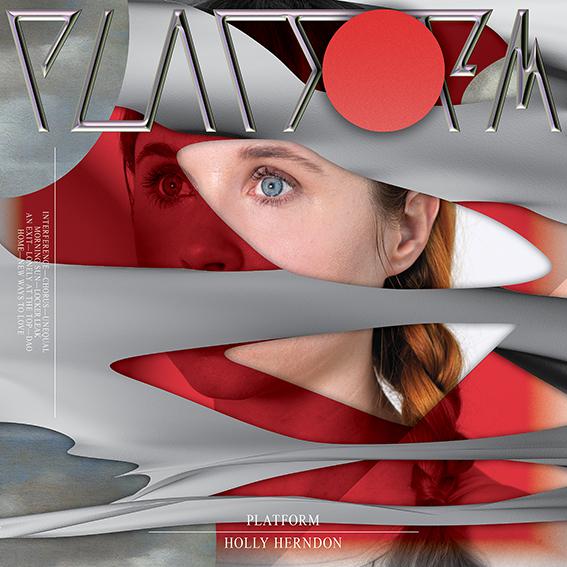The turn to the internet in art and music, to which the name 'post-internet' is most often applied, has seen the medium become self-aware and self-evaluating. The difficulty is that the internet is so broad and pervasive, and so historically, socially and materially contingent, that it's difficult even to define what it is, let alone point to any inherent effects, ideologies and aesthetics for the cultural field as anything other than particular, provisional and profoundly relative. But since the internet has now sped past the cassette and CD-R as the minimum threshold for musical distribution, musical culture has had to address it and its effects. One tempting strategy has been to conflate the internet as the distribution medium du jour with the internet as an influence du jour, an aesthetics: music on the internet becomes music about the internet.
This is a popular understanding of vaporwave, a genre and subculture that probably breaks the record for its levels of digitisation, with releases, reception and fan communities all almost wholly online. It has a particularly distinctive visual language relating to late-twentieth-century digital media, shopping and corporate culture, and the music takes smooth studio pop of the time and loops it, typically slowing it down or adding some effects to augment any element of the uncanny. Much like the lounge and 'space age bachelor pad music' revival of the 1990s, part of its appeal lies in its kitsch archaism, and this includes archaic digital systems such as Windows 95, whose startup sound has appeared in dozens of vaporwave tracks at least.
But if vaporwave is 'post-internet,' what does its prevailing visual signifier, the classical marble sculpture, represent? It would not be wrong to see these crumbling human forms as a statement about the ruins of the old internet, or even as a parallel to today's uncanny digital representations of humans, but the simpler explanation is that it is an attractively recherché motif from 1980s interior design. Similarly, statements about capitalism can be read into vaporwave's obsession with shopping malls, but at bottom, the style is motivated by the same attraction to exoticism, archaism and transgression, that have animated underground and counter-cultures for generations, as evidenced by the genre's fascination with hi-tech Japan. Vaporwave is more 'about the internet' than the lounge revival was 'about' the cassette or the CD, but there are limits to how much the message can be reduced to the medium.
The sense of a determinism existing between the internet and contemporary culture falls particularly heavily on the heads of millennials, who have been harangued as selfie-obsessed narcissists and distanced as 'digital natives' whose brains are differently adapted from growing up around the internet. Millennials are thus imagined to exist somewhere between the stunted, unwittingly degenerate victims of modern technological folly and frightening cyborgs about to make their parents obsolete (and their parents' appeals to authenticity and restraint especially obsolete). Like generations of rebels and punk rockers before them, millennials can be seen to be exploring this negative social projection, with ambiguous ratios of joy and rancour.
To whatever extent satirical or celebratory, the most famous agitator for this image of millennials must be the PC Music collective. The singer Hannah Diamond is one of their most intriguing acts, particularly because of her gentle appeals for her own authenticity and, indeed, their persuasiveness. The video for her single 'Hi' sees Diamond languishing in her bedroom using digital communications media, intercut with slow-motion depictions of her as an adored and photographed celebrity that may be diegetically imaginary as well as straightforwardly fictionalising. Echoing chart pop in the time of neoliberalism, it is as if Diamond is revelling in her successful platform and vindicating the narcissism expected of her as a millennial woman, whether on Instagram or the red carpet (increasingly treated as the same thing). And yet her lyrics speak of loneliness and rejection at the other end of the digital line: 'I don't wanna be alone in my bedroom, writing messages you won't read... writing messages, on the internet...' In one light, 'Hi' is simply a camp novelty pop song addressing contemporary technology, like Dee D. Jackson's 'Automatic Lover' (1978) or Zapp's 'Computer Love' (1985). In another, it explores anxious paradoxes about the failure to connect, about the possibility that millennials might be more - or, crucially, less - than they have been led to believe they are or will be. The internet might be a vehicle for this message, one of many, but it is not its unique cause.
One of the most complicated and far-reaching albums to have involved the internet recently has been Holly Herndon's Platform. Its title suggests the name given to websites that host content, with something of the implication that they are both a kind of pedestal and, as at a station, a way to go on a journey. As in Herndon's previous releases, the body and its traces are fragmented and processed in a twenty-first-century auditory equivalent of cubism, as if the listener or Herndon herself are engaged in the impossible or impossibly complex task of reconstructing coherent personhood from a body and a mind's digital traces. The video for her track 'Chorus' - its name reminiscent of the 'preaching to the choir' interpretation of Twitter politics, or the image of it as supplying a background rabble - uses 3D-scanned images of computer desktops, as if digital technologies are attempting (imperfectly) to understand their human others and the point of contact between the two. In this case, it is not so much a reduction of message to medium as an exploration of an often all-too-transparent point of interface and translation. As if in an effort to relocate the body and its pleasure, Herndon also explores autonomous sensory meridian response (ASMR), an internet craze for calming voices, which in the track 'Lonely at the Top' address a silent and implicitly stressed capitalist.
Rather than 'post-internet,' I prefer to think of a development and proliferation of narratives and images of a digital world - both a digitised world and a pseudo-imaginary, pseudo-distinct world that digital technology is often understood to have created (a virtual reality, a cyberspace etc). This world stretches well beyond the internet per se, which is ultimately a particular set of networks extending into every kind of digital mediation of life and culture and its attendant objects: computer interfaces and sounds, smartphones and tablets, simulations (‘hyperreality’), gaming, cybernetics, artificial intelligence, police and military presences, marketing, advertising, commodification and consumption, and an aesthetics of 'hi-tech' in general. But even more broadly defined, these images and narratives are just initial, limited descriptions of a medium whose immense social, cultural and creative possibilities are still being haltingly understood and contested, and are far too broad to be reduced to a single label or set of characteristics. As long as it is not merely cynical and reactionary in this regard, music plays and will continue to play a key part in this adventure.

